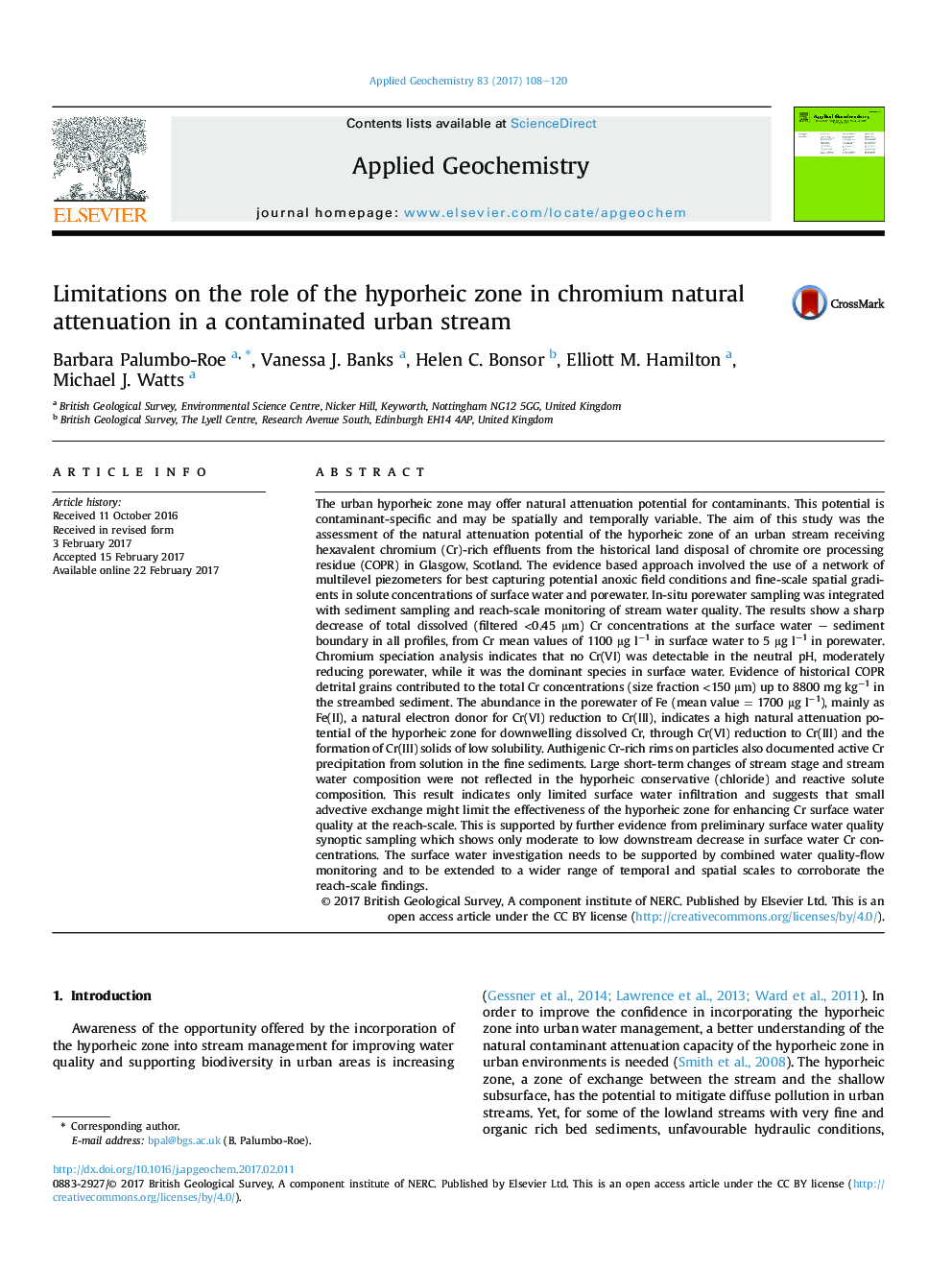| کد مقاله | کد نشریه | سال انتشار | مقاله انگلیسی | نسخه تمام متن |
|---|---|---|---|---|
| 5752554 | 1620208 | 2017 | 13 صفحه PDF | دانلود رایگان |
- The hyporheic hydrogeochemistry of a Cr(VI)-contaminated urban stream was studied.
- Cr was strongly depleted in the hyporheic porewater relative to the stream water.
- Hyporheic sediments reduce Cr(VI) to Cr(III) due to Fe(II) abundance in porewater.
- Hyporheic attenuation of surface water Cr is limited by poor connectivity.
- Variable stream flow and chemistry do not affect the hyporheic zone composition.
The urban hyporheic zone may offer natural attenuation potential for contaminants. This potential is contaminant-specific and may be spatially and temporally variable. The aim of this study was the assessment of the natural attenuation potential of the hyporheic zone of an urban stream receiving hexavalent chromium (Cr)-rich effluents from the historical land disposal of chromite ore processing residue (COPR) in Glasgow, Scotland. The evidence based approach involved the use of a network of multilevel piezometers for best capturing potential anoxic field conditions and fine-scale spatial gradients in solute concentrations of surface water and porewater. In-situ porewater sampling was integrated with sediment sampling and reach-scale monitoring of stream water quality. The results show a sharp decrease of total dissolved (filtered <0.45 μm) Cr concentrations at the surface water - sediment boundary in all profiles, from Cr mean values of 1100 μg lâ1 in surface water to 5 μg lâ1 in porewater. Chromium speciation analysis indicates that no Cr(VI) was detectable in the neutral pH, moderately reducing porewater, while it was the dominant species in surface water. Evidence of historical COPR detrital grains contributed to the total Cr concentrations (size fraction <150 μm) up to 8800 mg kgâ1 in the streambed sediment. The abundance in the porewater of Fe (mean value = 1700 μg lâ1), mainly as Fe(II), a natural electron donor for Cr(VI) reduction to Cr(III), indicates a high natural attenuation potential of the hyporheic zone for downwelling dissolved Cr, through Cr(VI) reduction to Cr(III) and the formation of Cr(III) solids of low solubility. Authigenic Cr-rich rims on particles also documented active Cr precipitation from solution in the fine sediments. Large short-term changes of stream stage and stream water composition were not reflected in the hyporheic conservative (chloride) and reactive solute composition. This result indicates only limited surface water infiltration and suggests that small advective exchange might limit the effectiveness of the hyporheic zone for enhancing Cr surface water quality at the reach-scale. This is supported by further evidence from preliminary surface water quality synoptic sampling which shows only moderate to low downstream decrease in surface water Cr concentrations. The surface water investigation needs to be supported by combined water quality-flow monitoring and to be extended to a wider range of temporal and spatial scales to corroborate the reach-scale findings.
Journal: Applied Geochemistry - Volume 83, August 2017, Pages 108-120
